Posted by By: Sakina Morbiwala, PT, MSc, CKTP. February 27, 2010 on Feb 5th 2021
Case Report: Lymphatic and blood flow effects of Kinesio Taping®
By: Sakina Morbiwala, PT, MSc, CKTP
February 27, 2010
Subject: Mrs. M is a pleasant 88-year-old female residing independently in senior apartments, and an active member of the community. She was ambulating without any device and was independent and driving until 12/31/09.
Diagnosis: On 12/31/09, she went shopping. She encountered a snow bank where she was reloading her groceries. She attempted to move the car by opening the car door leaving her left foot outside of the car and pressing on the accelerator with her right foot. However, she pressed too hard on the accelerator causing the door to slam on her extended left leg. She sustained a crush injury to her left calf muscle.
She was taken to the Emergency Dept. via ambulance where significant swelling of her left calf muscle was noted. Measurement of left calf circumference was 37.5 cm versus 31.5 cm on the (uninjured) right calf. Mrs. M had significant ecchymosis, both anterior to the tibia and in the calf.
The skin of the calf and inner thigh was starting to blister and she was admitted for a possible developing compartment syndrome and /or rhabdomyolysis and/or soft tissue sloughing due to the swelling.
Past Medical History: Remarkable for hypertension, hyperlipidemia L breast Ca s/p mastectomy, osteoporosis allergic rhinitis, hysterectomy, atrial fibrillation on Coumadin therapy.
Diagnostic Test & Intervention: L leg tibia/fibula and L knee films were obtained which showed no acute fracture or bony injury. A creatinine kinase was obtained which was elevated in approximately the 500 range. Cold moist wraps were applied pulse-2+in the posterior tibial and dorsalis pedis area. Coumadin was discontinued and INR was monitored. There were no signs or symptoms of compartment syndrome. Weight bearing as tolerated was suggested by orthopedic surgeon.
By 1/4/10, the blistering receded significantly and Mrs. M was restarted on Coumadin and sent to sub-acute rehab at our center which happened to be adjacent to her apartments. I had the opportunity to evaluate her on her day of admission on 1/4/10, four days after injury.
PT evaluation revealed a pleasant female, alert and oriented x3 with pain in L lower extremity accompanied by pulling sensation. Pain rated at 5/10 on a score of 0-10. Mrs. M also reported a pulling sensation which was uncomfortable and a catching sensation on flexion and extension of L hip and knee in supine and enhancement of pain on standing and walking. Range of Motion was actively limited in L ankle and hip and manual muscle testing demonstrated weakness of L lower extremity (2+ to3++). Standing balance was F/F- (static v/s dynamic) and Mrs. M was unable to adopt tandem stance or single leg stance.
Extensive ecchymosis noted on medial and lateral thigh and leg area. Ambulation required stand by assist with rolling walker, tolerated up to 150 feet and slightly guarded gait pattern with decreased cadence.
After obtaining Mrs. M’s consent, I decided to use my knowledge of Kinesio Taping to improve lymphatic and blood flow, to decrease edema, ecchymosis and pain, and thus improve functional mobility.On 1/6/10 (six days post injury) I used the fan cut taping technique with 10-25% tension over the inner and outer thigh and leg and calf area with the base at the inguinal and popliteal lymph nodes (see pictures 1-4)
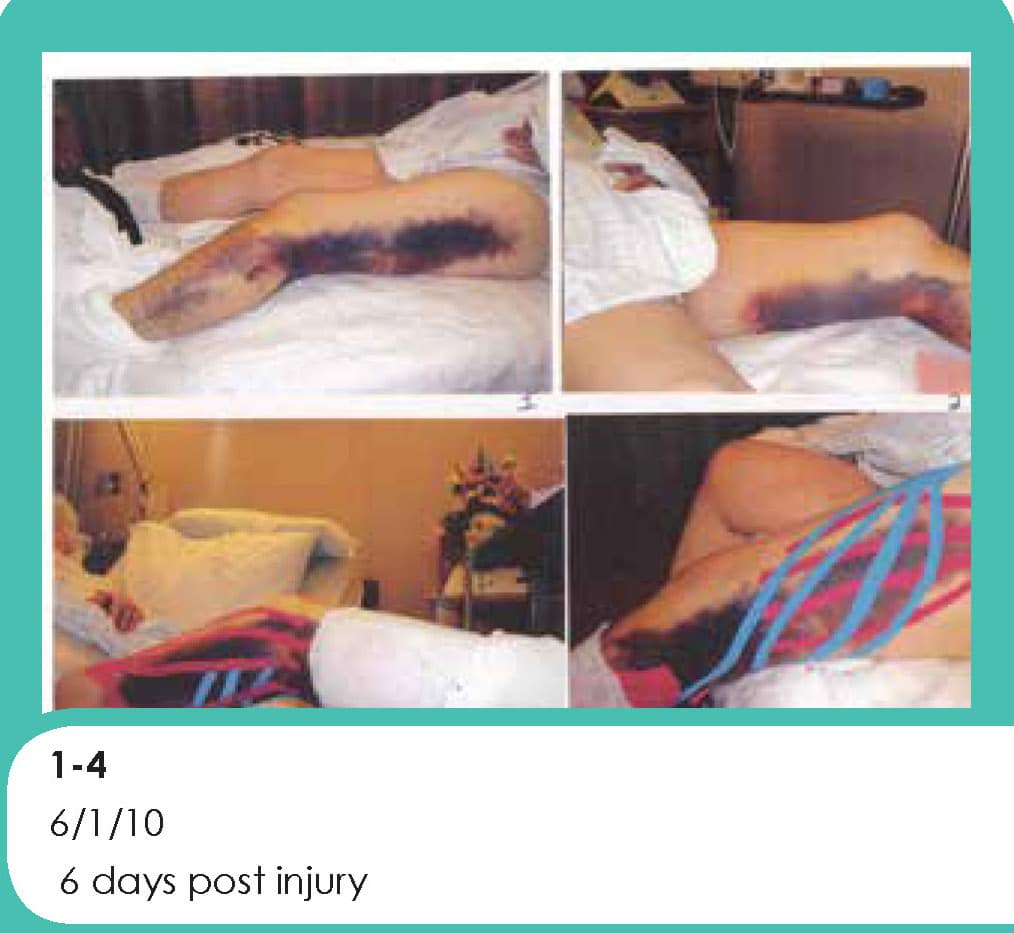
Mrs. M was concurrently receiving physical therapy including ice packs to L lower extremity, AROM and strengthening exercises utilizing NuStep x10 minutes, balance and neuromuscular reeducation and gait training with rolling walker. Pain was still at 3-4/10 in left lower extremity.
On 1/8/10 (eight days post injury) I removed the tape on L lateral thigh (see picture 5) and on 1/11/10 I took taping off from medial thigh and leg (see pictures 6 & 7). Considerable resolution of hematoma was noted. So I decided to retape the ecchymotic areas on L lat thigh, leg and calf (see pictures 8-11).
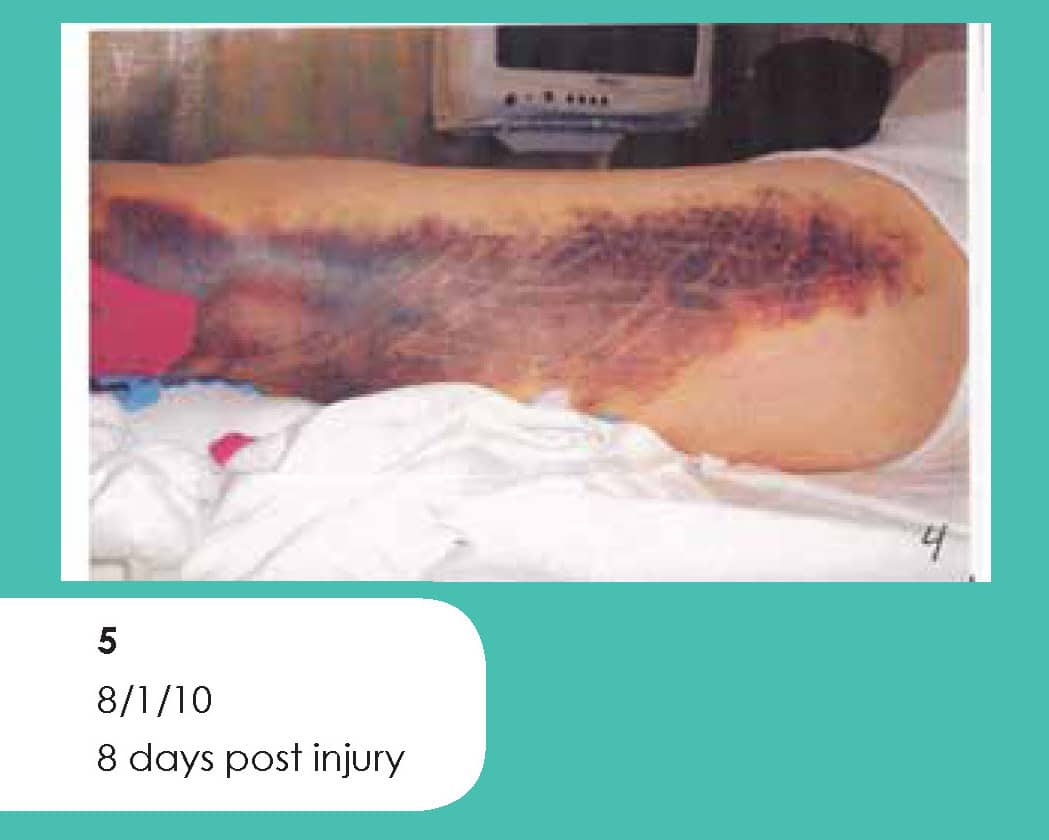
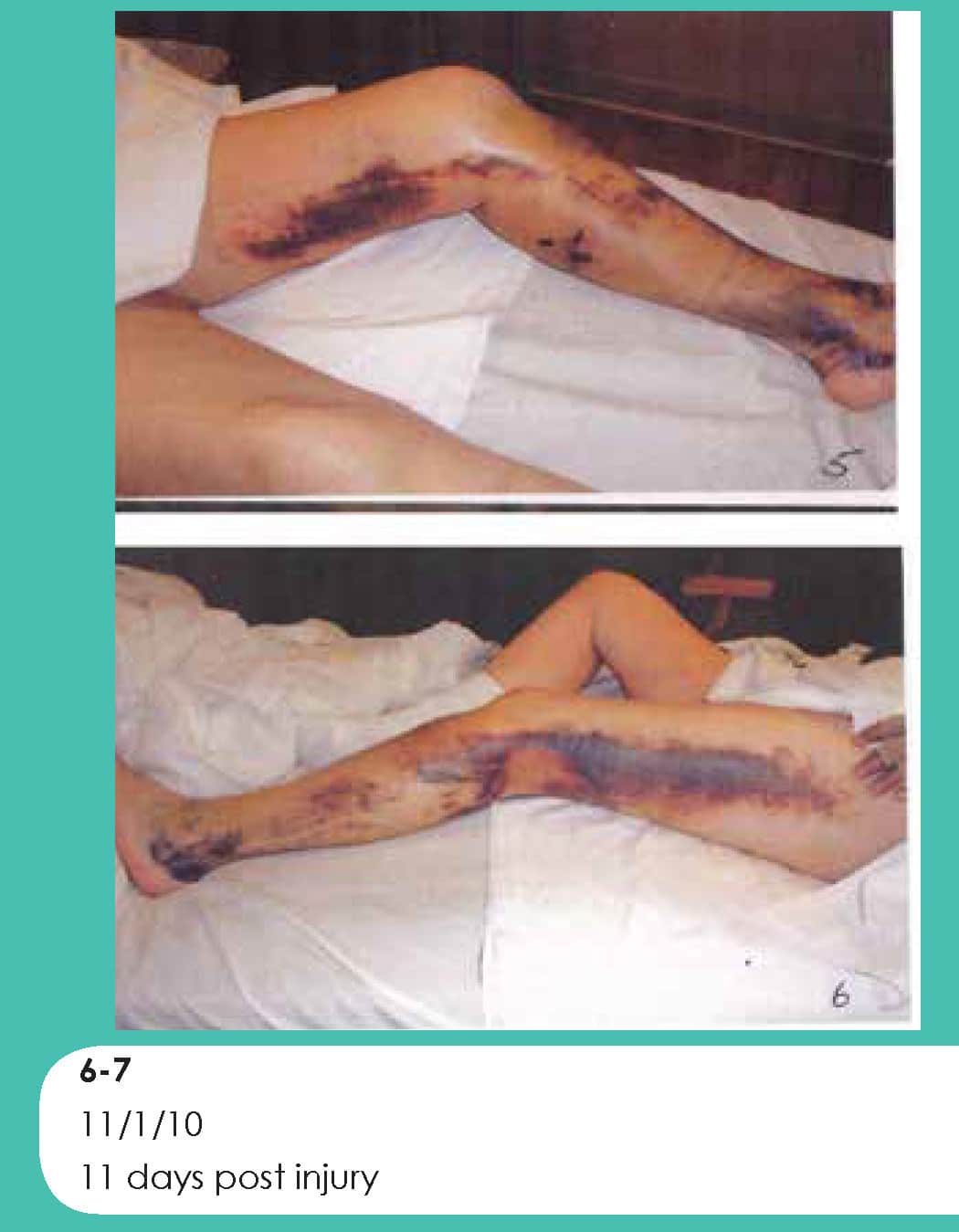
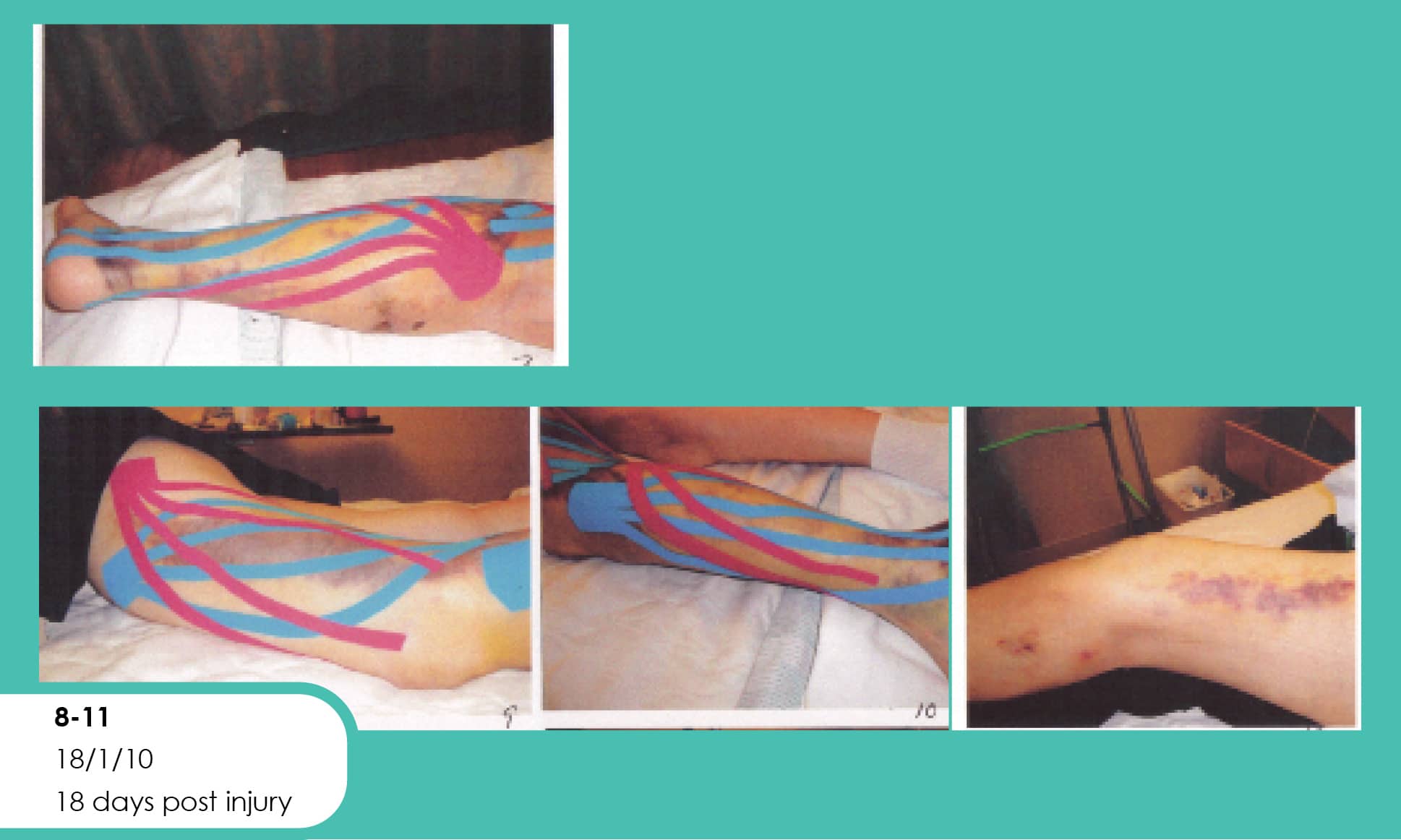
The blister on the thigh and posterior calf were dry and healed and by now measurement of calf girth was 34 cm on left side. Mrs. M had no complaint of pain in L lower extremity. Physical therapy was ongoing and Berg Balance Assessment score was 47/56. Distance of ambulation increased to 400 ft with RW.
Kinesio Tape was removed on 1/18/10 (18 days post injury) with significant reduction in ecchymosis(see picture 12-15). The fan tape was reapplied to address the minimal ecchymosis on L lateral thigh and leg (see pictures 16 & 17).
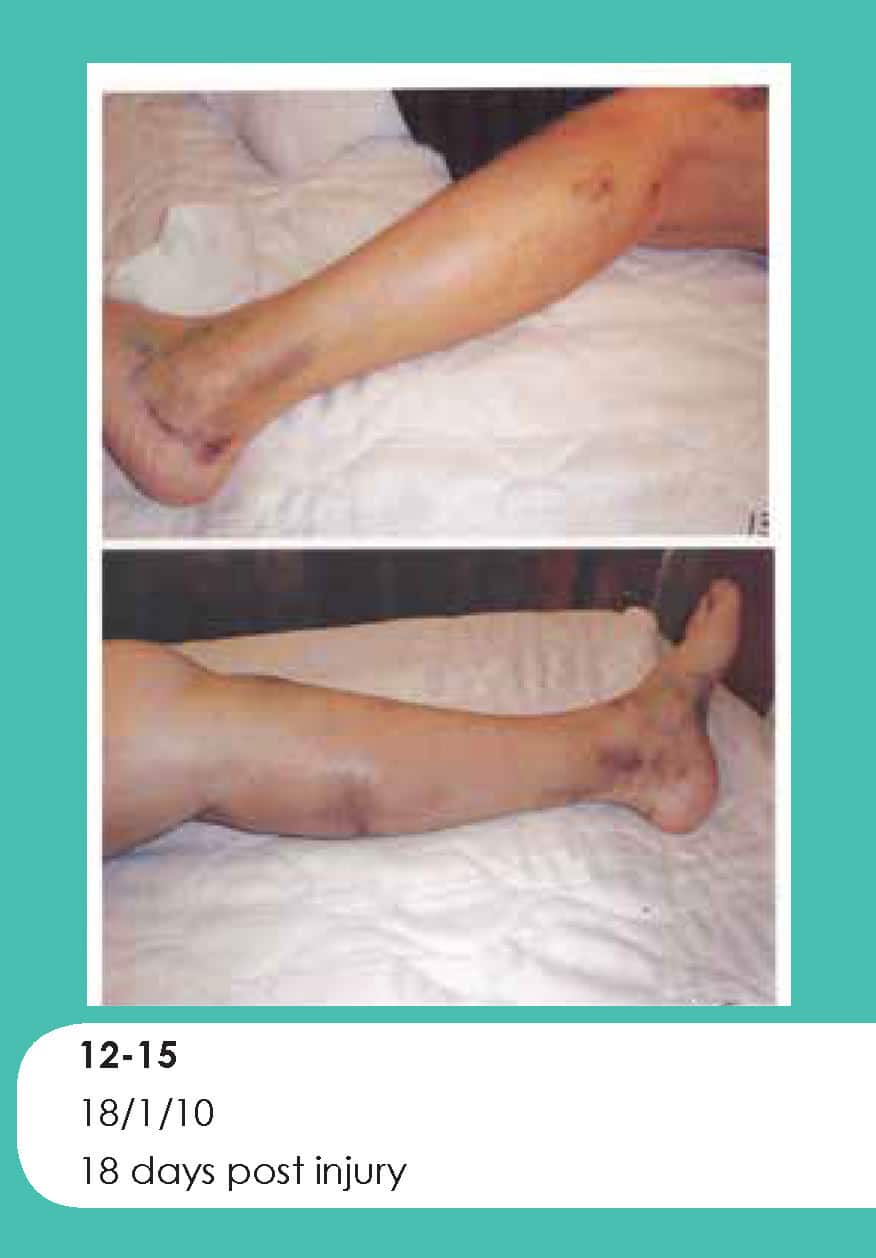
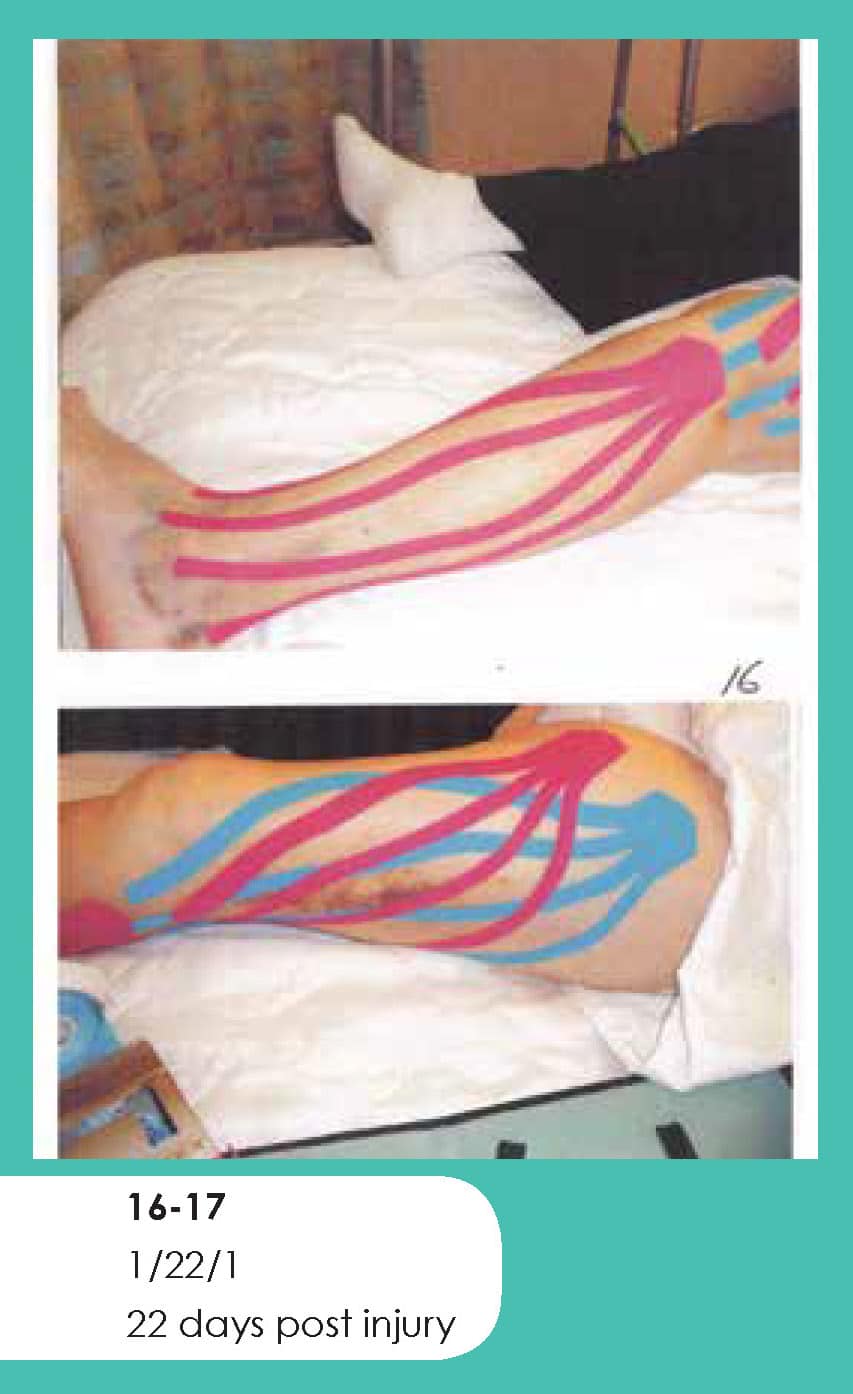
On 1/19/10 calf girth was 33.5 cm on L v/s 31.5 cm on right. No complaint of pain reported. However slight variation in blood pressure, due to medication changes, was observed and PT/INR was being closely monitored by MD. At the family care conference Mrs. M and her daughter were pleased with her progress and the daughter stated that the doctor had predicted 6 months for Mrs. M to heal completely.
On 1/22/10 the taping on lateral thigh and leg was removed and pictures were taken (18-22) which show almost normal skin color and integrity. Edema of L calf was unchanged from last measurement. Mrs. M reported no pain at rest, on exercises of L lower extremity, standing or ambulation. I recommended use of straight cane and provided a home exercise program. Berg Balance Test score remained the same, partly due to medication changes and variations in blood pressure. Mrs. M returned home on 1/25/10.
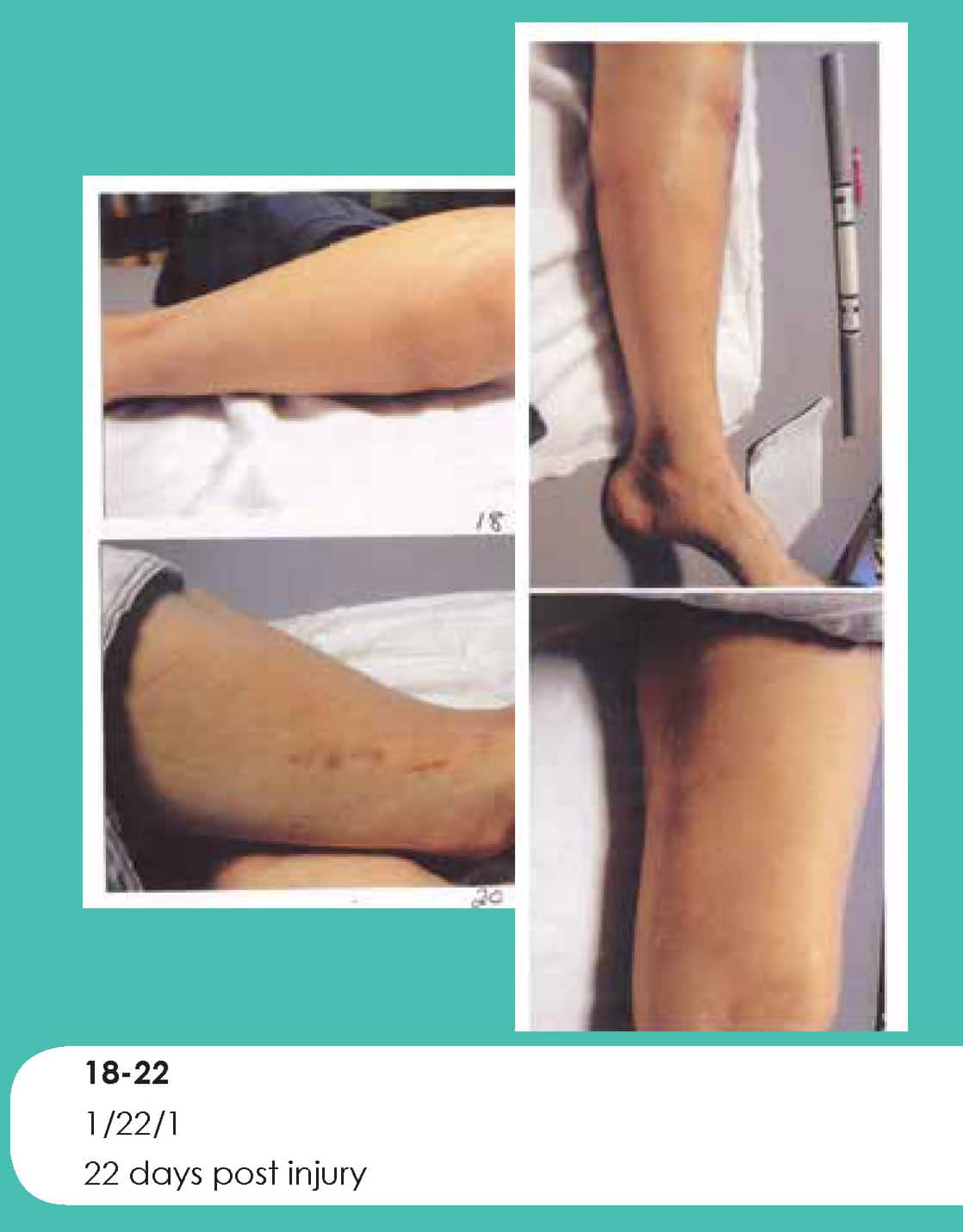
Conclusion: Kinesio Tex Gold worked as a miracle tape. The lymphatic correction was used to assist in the removal of edema by directing fluid towards a less congested lymphatic pathway and lymph node. This was accomplished by the lifting effect and elasticity of the tape. The space between the skin and muscle is often reduced as a result of the congestion of the flow of lymphatic fluid and blood. This congestion increases the activity of the pain receptors located in the dermis. Kinesio Taping increases the space between the skin and muscles to promote the flow of lymphatic fluid and blood.
The results of this case strongly recommend Kinesio Taping as an effective method for resolution of hematoma resulting from acute soft tissue injury as it helps to expedite healing and overall functional recovery in people of all ages.


